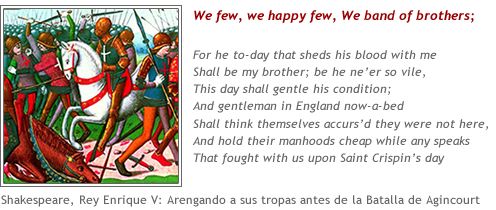| Glaciology |
 |
 |
 |
|
ICE MARKINGS CAUSED BY GLACIAL DETACHMENTS
The CECs Glaciology Laboratory, , in collaboration with the Institute of Geophysics, Polish Academy of Sciences, and with the Université du Québec à Trois-Rivières, recently published a research paper in the Journal Cold Regions Science and Technology on the spectral properties of ice markings caused by glacial calving.
Despite major advances in remote sensing and field studies of ice calving, little is known about the temporal distribution of the occurrence of such events. Knowing the exact moment in which they occur is crucial for a better understanding of the processes involved, i.e. whether the nature of calving is for example a chaotic or self-organized critical system. To close this gap, the researcher Micha? P?tlicki from CECs Glaciology Lab with his colleagues proposed a method of estimating the age of calving events of a tidewater glacier using infrared LiDAR point clouds. It is based on a theoretical model that links the measured intensities of LiDAR that depend on the spectral properties of ice in the infrared with a time of exposure of the ice to ablation.
Terrestrial LiDAR scans of the calving front of Fuerza Aerea Glacier (Greenwich Island, South Shetland Islands, Antarctica) were compared with the timing of the ice face exposure by calving events determined from video recordings. The developed model shows that ice aging, as seen by surface reflectivity, follows an exponential decay law in the form inverse to that of snow (Oerlemans and Knap, 1998). The reflectivity of the ice in the infrared increases significantly over time and shows a continuous brightening of the ice surface with aging. It is assumed that the processes of sub-aerial weathering are the main cause of the change. Solar radiation can lead to internal melting of the blue ice and formation of porous weathering crust over a calving scar. Development of weathered or superimposed ice on the calving scars is proposed as the explanation for increase of ice reflectivity with time. However, recent advances in LiDAR technology provide space for improving the model and its effectiveness of glacier calving timing predictions.
Ref.: Podgórski, Julian, P?tlicki, Micha?, Kinnard, Christophe (2018). Revealing recent calving activity of a tidewater glacier with terrestrial LiDAR reflection intensity, Cold Regions Science and Technology, 151, 288-301, doi:10.1016/j.coldregions.2018.03.00
|
| El Centro de Estudios Científicos (CECs) es una corporación de derecho privado, sin fines de lucro, dedicada al desarrollo, fomento y difusión de la investigación científica. El CECs fue fundado en 1984 como el Centro de Estudios Científicos de Santiago donde funcionó en una casa arrendada hasta el año 2000, momento en el que se mudó a Valdivia donde evolucionó para llegar a ser lo que es hoy. Desde su fundación el CECs ha sido dirigido por el físico Claudio Bunster. Luego de treinta y seis años de existencia, el CECs ha decidido renovar su sitio web, el cual se encuentra actualmente en construcción. En el intertanto las consultas pueden ser dirigidas a info@cecs.cl. Lo que sigue es un extracto de un folleto que fue producido justo después de que el centro se trasladara a Valdivia. Sentimos que estas palabras aún reflejan su espíritu: |
||||||
|
“

Una pequeña banda de investigadores del Centro de Estudios Científicos (CECs) en Valdivia, Chile, comparte un sueño audaz, anticuado en esta era de la Gran Ciencia – la búsqueda irrestricta del conocimiento, en un pequeño instituto independiente de investigación de primera calidad. Sus miembros se han reunido durante un lapso de tiempo que abarca ya, más de un cuarto de siglo, para emprender una aventura intelectual que es riesgosa, estimulante y tremendamente productiva.
Ubicado entre los Andes y el Pacífico, en esta pequeña ciudad del sur, el CECs es uno de los pocos institutos en el mundo que trabajan en investigación de vanguardia en múltiples disciplinas, sin recibir recursos o estar afiliada a ninguna institución anfitriona. Sus investigadores son libres para desarrollar su mejor ciencia con independencia de las modas y sin restricciones burocráticas, en una atmósfera de colaboración y apoyo mutuo. El fruto de este esfuerzo se traduce en un flujo permanente de ideas innovadoras, con estudiantes altamente capacitados y resultados que son publicados en revistas especializadas. El Centro ha demostrado lo errado de los prejuicios y escepticismo relacionados con su pequeño tamaño, al ubicar a Chile, con la capacidad de sus integrantes y audaz estrategia, en el mapa mundial de la ciencia, revolucionando de paso el modelo tradicional de estructurar la ciencia en Chile y mostrando – con su ejemplo – cómo “lograr más con menos”. Sus investigadores hablan en tono de curiosidad, maravilla y ocasionalmente orgullo al describir su emocionante viaje por aguas inexploradas. La estrategia del CECs es sustentar un entorno científicamente rico donde la ciencia y los científicos son lo primordial – atrayendo a las mejores personas, apoyándolos adecuadamente y ofreciéndoles libertad para perseguir sus sueños. ” |
| La actual tripulación del centro es la siguiente: |